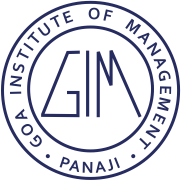General awareness on current topics is essential as not only you will be getting questions on GK in various MBA entrance exams but it will be useful for Essay writing test and WAT also.
Today, you will read General Awareness Topic: "Cauvery Water Issue"
Since independence, right over the water of Cauvery water has been a bone of contention between the south Indian states of Karnataka and Tamil Nadu. Taking the stock of situation, in 1990, Supreme Court of India directed the then government headed by Prime Minister V. P. Singh to constitute a tribunal and refer all disputes to it.
A three man tribunal was thus constituted on 2 June 1990. Against the interim order of the tribunal, violence and demonstrations were witnessed in Bangalore in 1991 resulting in the exodus of Tamil families from Bangalore.
Later in 2002, as part of protests, Tamil TV channels and screening of Tamil films were blocked in Karnataka. Also all buses and vehicles from Tamil Nadu were barred from entering Karnataka. On the other hand in Tamil Nadu, activists started calling for a stoppage of power from the Neyveli Power station to Karnataka as a tit-for-tat measure.
A Pan-Tamil militant outfit went ahead and blasted a major power transformer supplying power to the neighboring states of Karnataka and Andhra Pradesh. Thus Cauvery Water issue is a very sensitive issue between two states and anything except status quo starts streak of protests in either of the states.
The Cauvery Water Tribunal gave its decision in 2007 and allocated 419 tmc ft of water annually to Tamil Nadu and 270 tmc ft to Karnataka. In the much-awaited final verdict after more than 16 years of hearings, the Tribunal also awarded 30 tmc ft of Cauvery river water to Kerala and 7 tmc ft to Puducherry, the other parties to the dispute. The Tribunal, set up in 1990, had in its interim order given 205 tmc ft of water to Tamil Nadu. Headed by retired Justice N P Singh, the three-member Tribunal had arrived at the total availability of water at 740 tmc ft. The actual release of 192 tmc ft will take place as measured at the Biligundlu reservoir on Karnataka-Tamil Nadu border.
Recently, on 19th September 2012, Prime Minister Manmohan Singh , who is also the Chairman of Cauvery River Authority (CRA), directed Karnataka to release 9,000 cusecs of Cauvery water to Tamil Nadu at Biligundlu (the border) daily from September but Karnataka refused and felt that this is impractical due to the drought conditions prevailing because of the failed monsoon and filed a petition before and filed a petition before the Cauvery River Authority seeking review of its September 19 ruling.
Meanwhile, Tamil Nadu Chief Minister directed the officials to immediately file a petition in the Supreme Court seeking a direction to Karnataka to release Tamil Nadu its due share of water. Consequently, Supreme Court ordered Karnataka to release 9000 cusecs of water to Tamil Nadu till 15 October. Karnataka started releasing water and this resulted in widespread protests across Karnataka. Several Kannada organisations, under the banner of “Kannada Okkoota”, called a Karnataka bandh on October 6 in protest against the Cauveri water release.
No acceptable solution has been provided from either side and many capable of doing so don’t want to open the Pandora box. Solution initiated by some groups like the Cauvery Family, a union of apolitical farmers, have tried to find solutions like desilting tanks and changing crop patters, this has often failed because of lack of political backing.
Among the many factors that jeopardised a mutually acceptable agreement from being successfully adhered to by both the states is the strong presence of vote-bank politics amongst the regional as well as national parties. As far as Karnataka is concerned the upcoming 2013 assembly elections are a major deterrent. While Karnataka ardently believes that being an upstream riparian state it should hold prime governance rights over the course of the water, without being restricted of its share under any circumstance.
Tamil Nadu, basing its argument on the prescriptive rights principle, advocates that being the first to commence irrigation development in the region and having put the water course into beneficiary application for the entire peninsula, its right to share of the waterway should not be curtailed on any ground either. If both the states accept their given share according to the ‘distress sharing formula’, such a state of conflict would never exist.
Water dispute is not new in India and many other states are also engaged water dispute like Punjab, Haryana and Rajasthan etc. Among few solution proposed include centralization of all water resources of the country, interlinking of rivers, less dependence of monsoon etc.
Mentioned solutions cannot be implemented in short term but they must be heeded for a long term solution. In the short term, all the parties should rise above petty politics and work amicably to reach a solution acceptable to the states.






